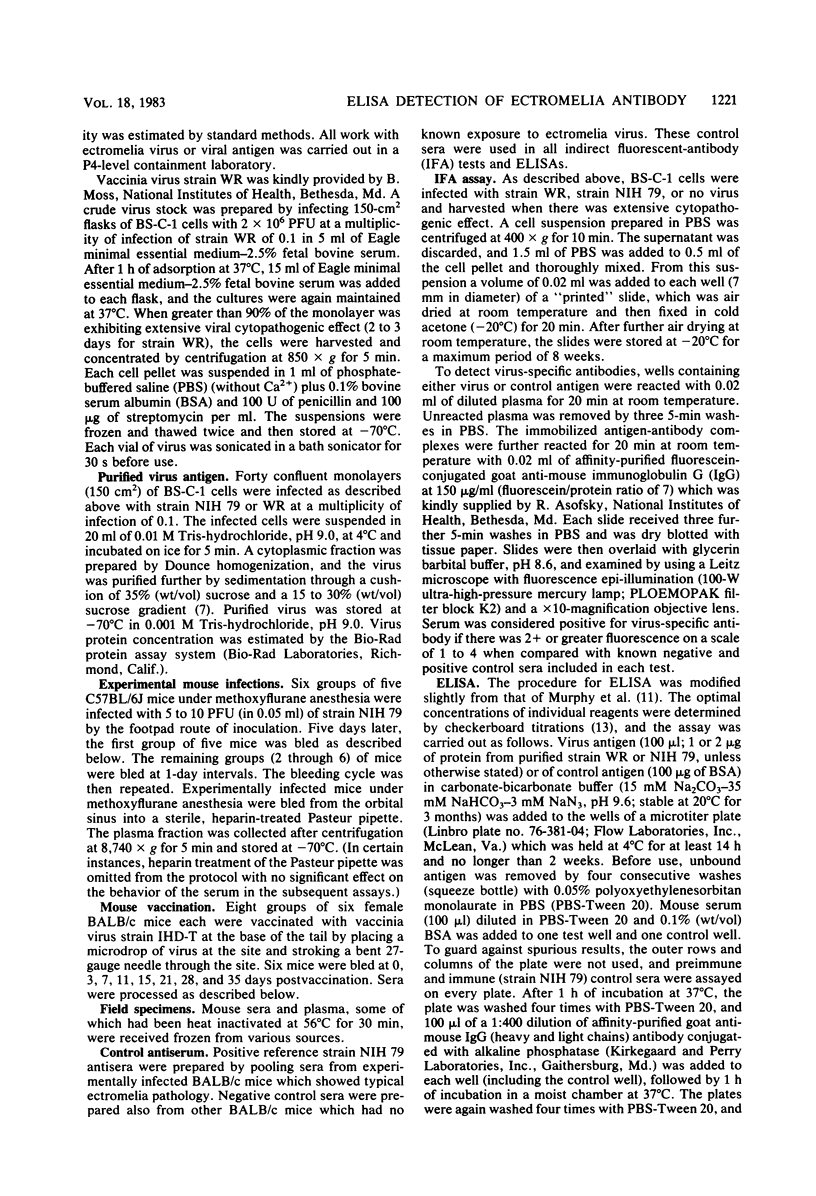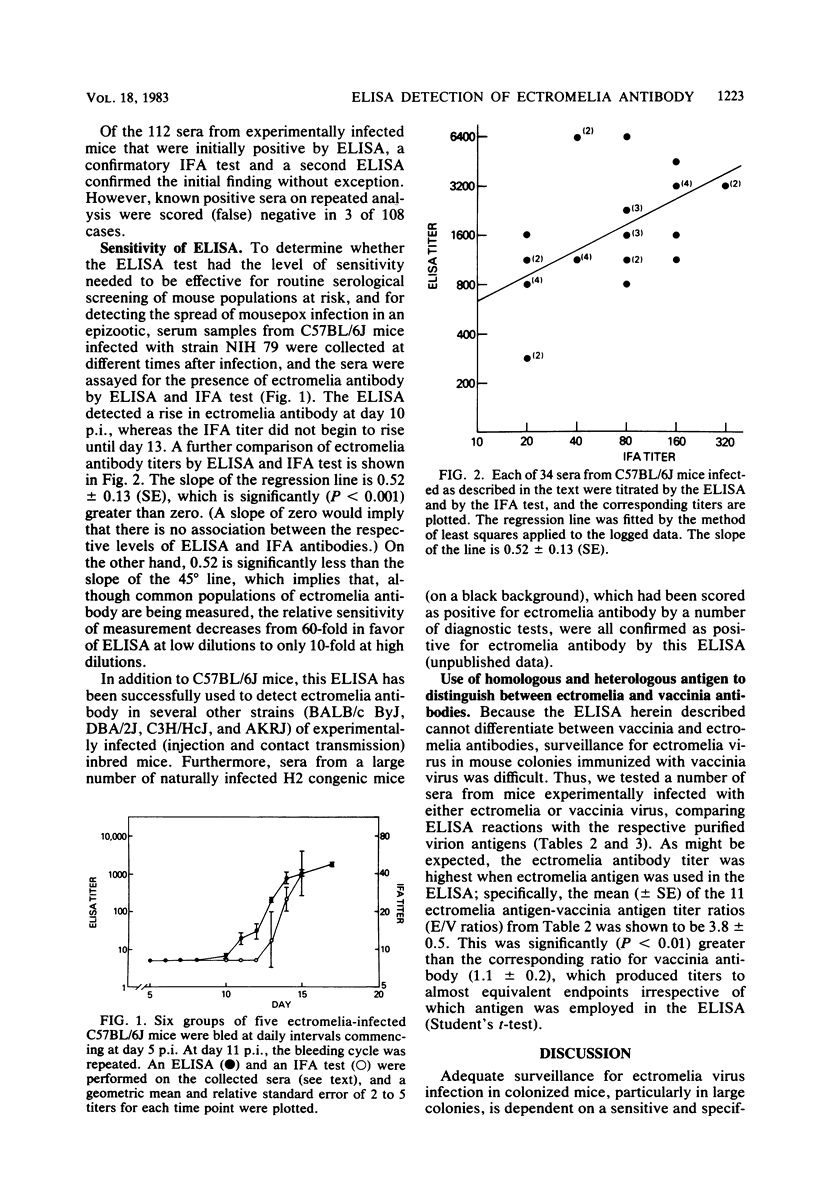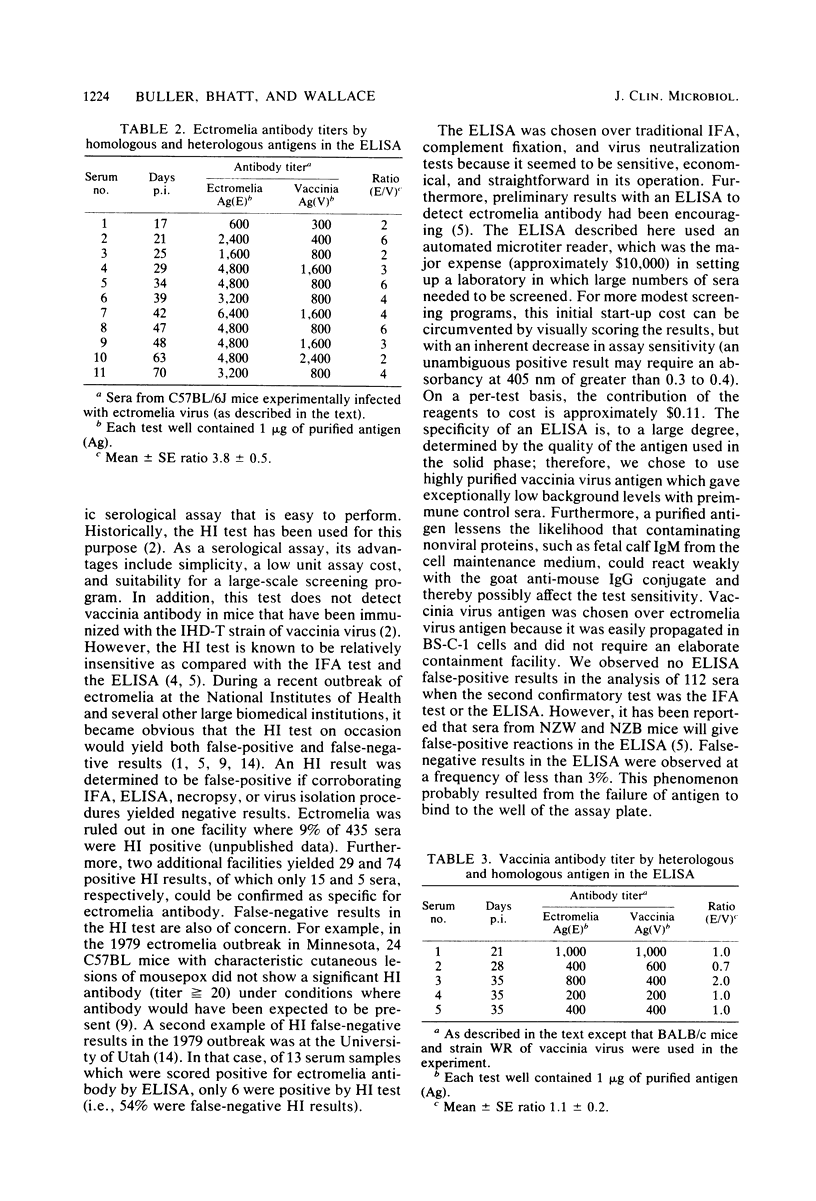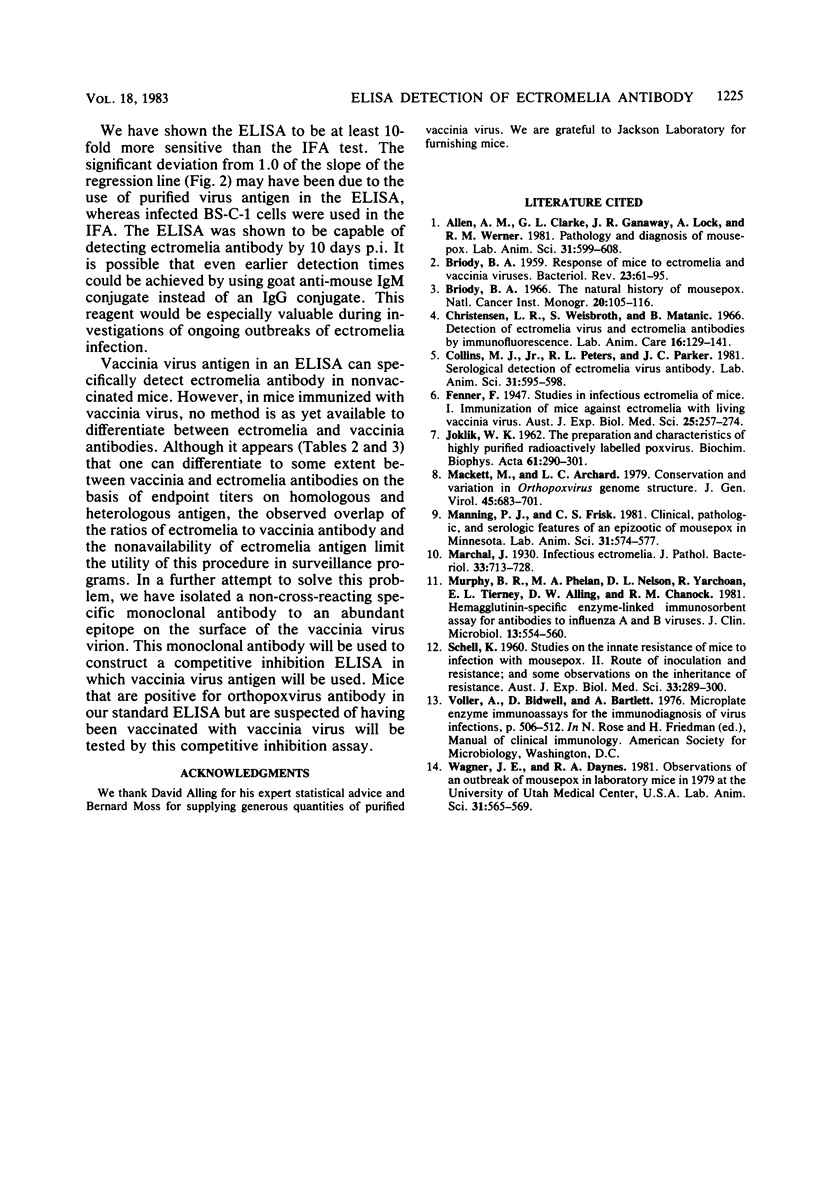Abstract
Ectromelia virus, an orthopoxvirus that can cause extensive morbidity and mortality (mousepox) in colonized mice, has been epizootically responsible for serious disruption of biomedical research since 1930. The lack of a sensitive and specific serological assay for infection with this virus became apparent during outbreaks of mousepox at the National Institutes of Health, Bethesda, Md., and other biomedical research institutions in 1979 and 1980. To fill this need, we evaluated an enzyme-linked immunosorbent assay. Sucrose gradient-purified ectromelia and vaccinia viruses were compared as antigens in tests on approximately 1,000 mouse sera from experimentally infected mice and conventional colonies of uninfected mice. A statistical analysis based on the frequency distribution of the absorbance values for 152 mouse sera (free of ectromelia antibody) gave 0.22 as a value to differentiate ectromelia-positive sera from ectromelia-negative sera. When enzyme-linked immunosorbent assay results were compared with those obtained by an indirect immunofluorescence assay, the former was found to be at least 10-fold more sensitive. With the procedures employed, including the use of purified vaccinia virions as antigen, the enzyme-linked immunosorbent assay proved to be highly sensitive and specific for detecting antibodies to ectromelia and vaccinia viruses. False-positive results were not encountered. False-negative results were observed in 3% of 108 separate tests of a known positive serum. Although data indicated that ectromelia antibody can be differentiated from vaccinia antibody with homologous and heterologous antigen, this procedure probably cannot be generally used because of unavailability of ectromelia antigens.
Full text
PDF





Selected References
These references are in PubMed. This may not be the complete list of references from this article.
- Allen A. M., Clarke G. L., Ganaway J. R., Lock A., Werner R. M. Pathology and diagnosis of mousepox. Lab Anim Sci. 1981 Oct;31(5 Pt 2):599–608. [PubMed] [Google Scholar]
- BRIODY B. A. Response of mice to ectromelia and vaccinia viruses. Bacteriol Rev. 1959 Jun;23(2):61–95. doi: 10.1128/br.23.2.61-95.1959. [DOI] [PMC free article] [PubMed] [Google Scholar]
- Briody B. A. The natural history of mousepox. Natl Cancer Inst Monogr. 1966 Feb;20:105–116. [PubMed] [Google Scholar]
- Christensen L. R., Weisbroth S., Matanic B. Detection of ectromelia virus and ectromelia antibodies by immunofluorescence. Lab Anim Care. 1966 Apr;16(2):129–141. [PubMed] [Google Scholar]
- Collins M. J., Jr, Peters R. L., Parker J. C. Serological detection of ectromelia virus antibody. Lab Anim Sci. 1981 Oct;31(5 Pt 2):595–598. [PubMed] [Google Scholar]
- JOKLIK W. K. The preparation and characteristics of highly purified radioactively labelled poxvirus. Biochim Biophys Acta. 1962 Aug 20;61:290–301. doi: 10.1016/0926-6550(62)90091-9. [DOI] [PubMed] [Google Scholar]
- Mackett M., Archard L. C. Conservation and variation in Orthopoxvirus genome structure. J Gen Virol. 1979 Dec;45(3):683–701. doi: 10.1099/0022-1317-45-3-683. [DOI] [PubMed] [Google Scholar]
- Manning P. J., Frisk C. S. Clinical, pathologic, and serologic features of an epizootic of mousepox in Minnesota. Lab Anim Sci. 1981 Oct;31(5 Pt 2):574–577. [PubMed] [Google Scholar]
- Murphy B. R., Phelan M. A., Nelson D. L., Yarchoan R., Tierney E. L., Alling D. W., Chanock R. M. Hemagglutinin-specific enzyme-linked immunosorbent assay for antibodies to influenza A and B viruses. J Clin Microbiol. 1981 Mar;13(3):554–560. doi: 10.1128/jcm.13.3.554-560.1981. [DOI] [PMC free article] [PubMed] [Google Scholar]
- SCHELL K. Studies on the innate resistance of mice to infection with mousepox. II. Route of inoculation and resistance; and some observations on the inheritance of resistance. Aust J Exp Biol Med Sci. 1960 Aug;38:289–299. doi: 10.1038/icb.1960.30. [DOI] [PubMed] [Google Scholar]
- Wagner J. E., Daynes R. A. Observations of an outbreak of mousepox in laboratory mice in 1979 at the University of Utah Medical Center, USA. Lab Anim Sci. 1981 Oct;31(5 Pt 2):565–569. [PubMed] [Google Scholar]


